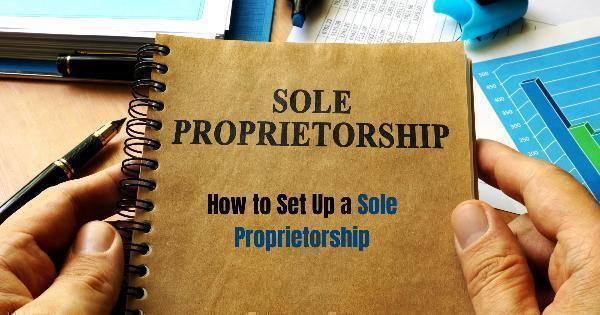How to Set Up a Sole Proprietorship: The 2024 Guide

Strong 8k brings an ultra-HD IPTV experience to your living room and your pocket.
Sole Proprietorship Introduction :
A sole proprietorship is the simplest form of business structure. It's ideal for individuals who want to start a business on their own.
Here's a step-by-step guide to setting up a sole proprietorship:
1. Choose a Business Name:
Ensure the name is unique and not already in use.
Check with the local Registrar of Companies or the Department of Commerce to avoid conflicts.
Consider using a name that reflects your business's nature or values.
2. Register for Taxes:
Obtain a Permanent Account Number (PAN) from the Income Tax Department.
Register for Goods and Services Tax (GST) if applicable.
Comply with local tax regulations.
3. Obtain Necessary Licenses and Permits:
Research and obtain any required licenses or permits specific to your industry or location.
This may include business licenses, shop licenses, or industry-specific certifications.
4. Open a Business Bank Account:
Separate your personal and business finances.
A business bank account makes it easier to track income and expenses.
5. Create Business Records:
Maintain accurate records of income, expenses, and transactions.
This will be essential for tax purposes and financial planning.
6. Consider Legal Documentation:
While not mandatory, creating a business plan and a partnership agreement can provide clarity and structure.
Converting a Sole Proprietorship to an LLP:
If your business grows and you need more legal protection or want to bring in partners, you can consider converting your sole proprietorship to a Limited Liability Partnership (LLP).
Ways to Convert a Sole Proprietorship in India into a Limited Liability Partnership
Steps to Convert:
Form a New LLP:
- Register a new LLP with the Registrar of Companies (ROC) in India.
- Provide the necessary documents, including the LLP agreement, details of the partners, and the required fees.
Transfer Assets and Liabilities:
- Transfer the assets and liabilities of the sole proprietorship to the newly formed LLP.
- This may involve a novation agreement to transfer contracts and obligations.
Dissolve the Sole Proprietorship:
- File the necessary paperwork with the relevant authorities to dissolve the sole proprietorship. This typically involves a notice of dissolution and a final tax return.
Obtain the LLP Certificate:
- Once the ROC approves the conversion, you will receive the LLP certificate, which confirms the new legal entity.
Benefits of Converting to an LLP:
Limited Liability: Partners are not personally liable for the debts or liabilities of the LLP.
Flexibility: LLPs offer more flexibility in terms of management and profit sharing.
Tax Benefits: LLPs may enjoy certain tax advantages.
Steps to Convert to an LLP:
- File an application with the Registrar of Companies.
- Provide the necessary documents, including the LLP agreement and details of the partners.
- Pay the required fees.
- Obtain the LLP certificate.
Comparison of LLC, Partnership, and Sole Proprietorship
Sole Proprietorship
Ownership: Owned by a single individual.
Liability: Unlimited liability; the owner is personally responsible for all business debts and liabilities.
Taxation: Profits and losses are reported on the owner's personal income tax return.
Legal Formalities: Minimal legal formalities are required.
Partnership
Ownership: Owned by two or more individuals.
Liability: Generally unlimited liability, but limited partnerships offer limited liability to some partners.
Taxation: Profits and losses are reported on the partners' personal income tax returns.
Legal Formalities: More legal formalities than a sole proprietorship, including a partnership agreement.
Limited Liability Company (LLC)
Ownership: Owned by one or more members.
Liability: Members are not personally liable for the company's debts and liabilities.
Taxation: LLCs can choose to be taxed as a sole proprietorship, partnership, or corporation.
Legal Formalities: More formal than a sole proprietorship but less than a corporation, requiring the filing of articles of organization.
Final Thoughts:
The process of establishing a sole proprietorship is not too complicated. But before you start your business, you must understand the financial and legal ramifications. To ensure compliance with all applicable regulations, it may be advisable to seek guidance from a legal or financial professional.
Checkout The Other Blog:
UPBOCW Registration
Note: IndiBlogHub features both user-submitted and editorial content. We do not verify third-party contributions. Read our Disclaimer and Privacy Policyfor details.







